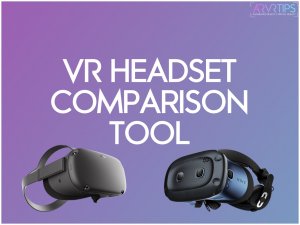The Ultimate VR Headset Comparison Guide
Finding the right VR headset in 2025 can be challenging with so many options. This guide compares all of the top VR headsets to help you decide based on features like resolution, field of view, tracking systems, and price.
Key Takeaways
- Primary Use Case: For gaming, consider the Meta Quest 3, PlayStation VR2, or Quest 2. For professional/enterprise use, look at the HTC Vive Pro 2 or Pico 4 Ultra. For mixed reality and productivity, the Apple Vision Pro or Meta Quest 3 excel. For high-end PC VR, the Valve Index remains a strong choice.
- Platform Preference: If you need wireless freedom, standalone headsets like the Quest series or Pico 4 Ultra are ideal. For PC enthusiasts, the Valve Index and HTC Vive Pro 2 offer premium tethered experiences. PS5 gamers should opt for the PlayStation VR2. Apple users might prefer the Vision Pro’s ecosystem integration.
- Budget Considerations: Options range from the budget-friendly Quest 2 ($299) to mid-range choices like the Quest 3 ($499) and PSVR2 ($549), up to premium options like the Valve Index ($999) and ultra-premium Vision Pro.
Quick VR Headset Comparison Table
| Feature | Meta Quest 3 | Meta Quest 2 | Valve Index | Pico 4 Ultra | PlayStation VR2 | Apple Vision Pro | HTC Vive Pro 2 |
|---|---|---|---|---|---|---|---|
| Resolution | 2064 x 2208 per eye | 1832 x 1920 per eye | 1832 x 1920 per eye | 1832 x 1920 per eye | 2000 x 2040 per eye | 23 million total pixels | 2448 × 2448 per eye |
| Refresh Rate | 120Hz | 72Hz, 90Hz, 120Hz (experimental) | Up to 144Hz | 120Hz | Up to 120Hz | 90Hz, 96Hz, 100Hz | 90Hz, 120Hz |
| Storage | 128GB ($499) 512GB ($649) | 128GB, 256GB | Not applicable (PC) | 256GB | Not applicable (PS5) | 256GB, 512GB, 1TB | Not applicable (PC) |
| Battery Life | 2-3 hours | 2-3 hours | Not applicable (Wired) | 4 hours | Not applicable (Wired) | 2-2.5 hours | Not applicable (Wired) |
| Weight | 515g | 503g | 809g | 580g | 470g | 600-650g | Not specified |
| Field of View | 110° horizontal 96° vertical | 96° | 135° horizontal 110° vertical | 105° | 110° | Not specified | 120° horizontal |
| Display Type | LCD | LCD | LCD | High-resolution LCD | OLED | OLED | LCD |
| Tracking | Inside-out | Inside-out | External base stations | Inside-out | Inside-out | Inside-out | External base stations |
| Connection | Standalone/PC | Standalone/PC | DisplayPort/USB (PC) | Standalone/PC | USB-C (PS5) | Standalone | DisplayPort 1.2+ (1.4 for full res) |
| Price | $499-$649 | $299-$399 | $999 (Full Kit) | Not specified | $549.99 | Not specified | Not specified |
| Additional Features | Mixed Reality | – | IPD adjustment | Advanced passthrough | OLED display | visionOS | IPD: 57-70mm |
Each headset caters to different needs – gaming, productivity, or professional use. Read on for detailed comparisons to find the best fit for you.
Meta Quest 3 Overview
The Meta Quest 3 is a top choice among standalone VR headsets, offering impressive performance and ease of use. Its 4K+ Infinite Display ensures sharp visuals with a resolution of 2064 x 2208 pixels per eye and a smooth 120Hz refresh rate. The 110° horizontal and 96° vertical field of view enhances immersion without requiring extra hardware.
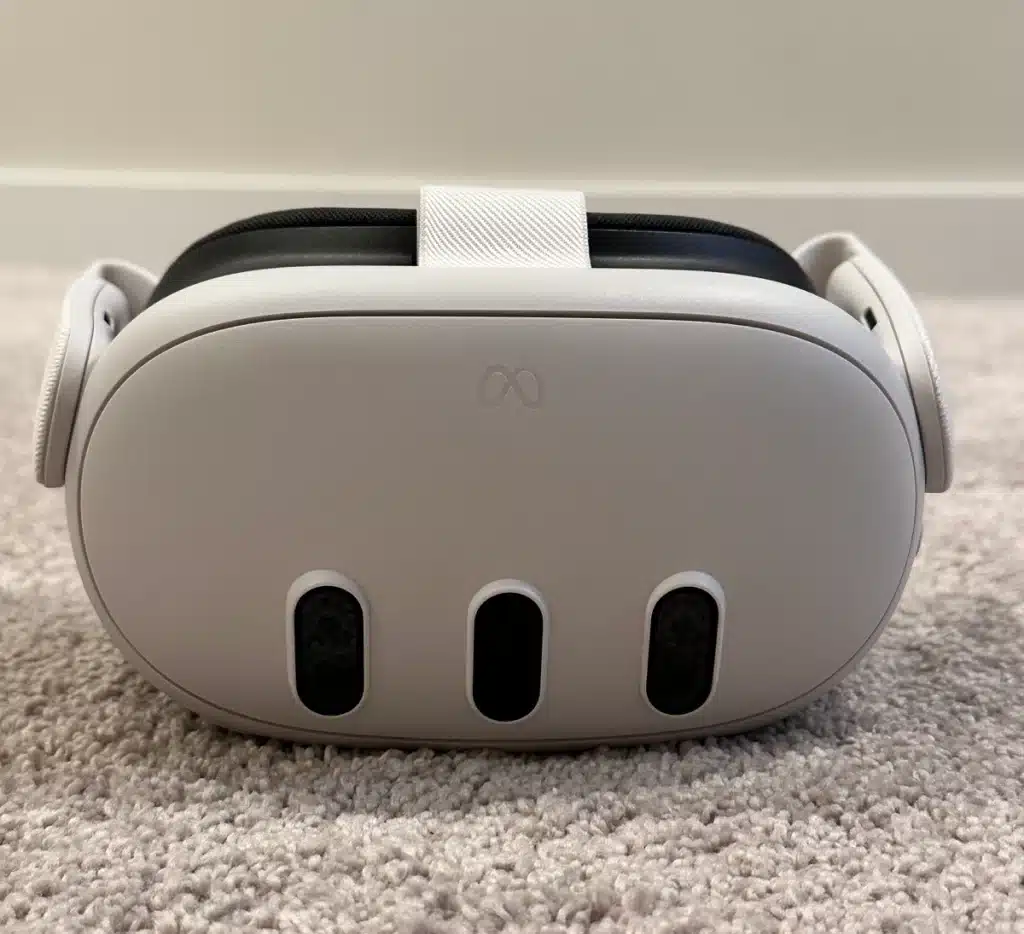
Equipped with the Snapdragon XR2 processor, this headset delivers double the graphical power of its predecessor. Its slim design – 40% thinner than the Quest 2 – improves comfort without sacrificing durability.
| Feature | Specification |
|---|---|
| Resolution | 2064 x 2208 per eye |
| Refresh Rate | 120Hz |
| Storage Options | 128GB ($499) / 512GB ($649) |
| Battery Life | 2-3 hours |
| Weight | 515 grams |
| Field of View | 110° horizontal, 96° vertical |
The Smart Guardian System and color passthrough features enhance mixed reality by blending real-world and virtual elements seamlessly. However, it lacks eye-tracking, a feature available in some high-end models.
As a standalone device, the Meta Quest 3 doesn’t require additional hardware and is compatible with various devices for content streaming. Its 2-3 hour battery life makes it suitable for both gaming and work sessions.
While the Meta Quest 3 excels as a standalone headset, models like the Valve Index cater to users seeking a premium tethered experience.
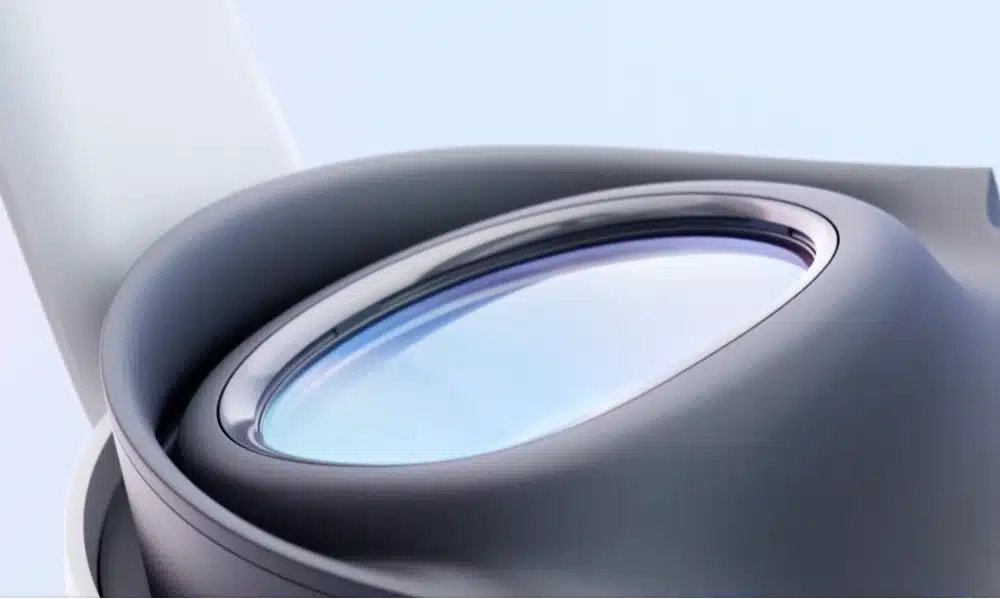
Meta Quest 3S Overview
The Meta Quest 3S represents Meta’s latest push toward offering mixed reality at a cheaper price, launching in October 2024. Powered by the Snapdragon XR2 Gen 2 chipset and equipped with 8GB of RAM, this headset delivers impressive performance at a budget-friendly price point.
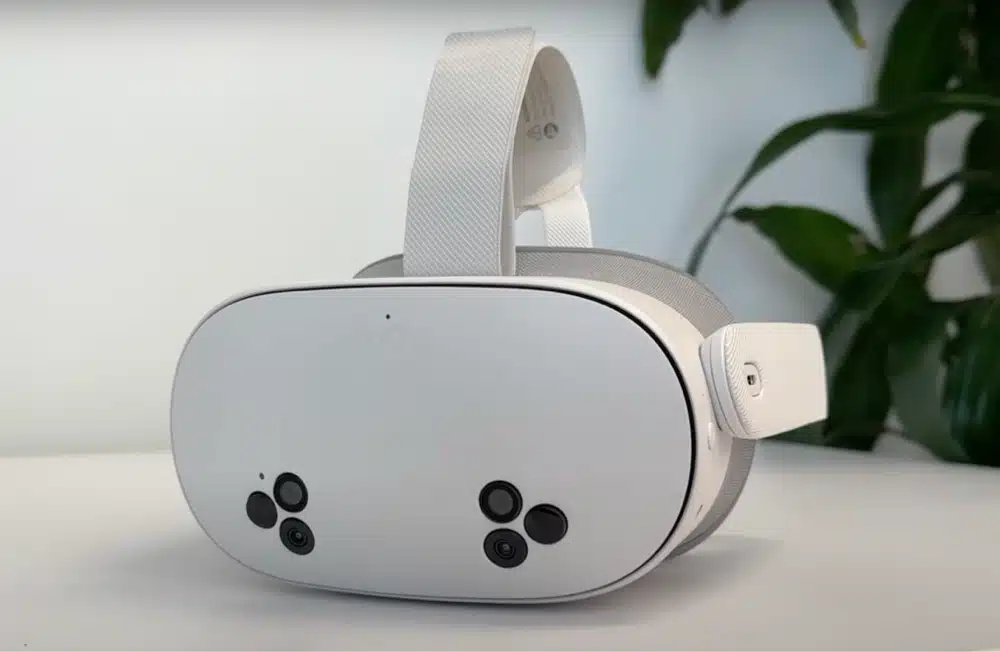
Its single LCD panel provides a resolution of 1832 x 1920 pixels per eye, with a crisp 773 PPI density and smooth 120Hz refresh rate. The fresnel lens design helps maintain a slim profile while delivering a 96-degree field of view.
| Specification | Detail |
|---|---|
| Resolution | 1832 x 1920 per eye |
| Refresh Rate | 120Hz |
| Storage Options | 128GB ($299.99), 256GB ($399.99) |
| Battery Life | 2.5 hours |
| Field of View | 96 degrees |
| RAM | 8GB |
Six strategically placed cameras in triangular sets enable inside-out tracking and full-color passthrough for mixed reality experiences. While it lacks the depth sensor found in the Quest 3, the infrared illuminator and fisheye camera maintain reliable tracking performance.
The Quest 3S maintains compatibility with Quest 3 exclusive games thanks to its modern chipset, while supporting broader entertainment options like Xbox Game Pass. A dedicated button enables quick switching between virtual and mixed reality modes.
Design and Comfort
Taking design cues from the Oculus Go, the Quest 3S features a flatter profile and is 20% slimmer than the Quest 2. The headset includes Touch Plus controllers and supports hand tracking for controller-free interactions when preferred.
Connectivity and Features
Built-in audio, USB-C connectivity, and Wi-Fi support provide a wireless experience with minimal setup. The Guardian system helps define safe play areas, while the virtual desktop feature enables PC integration through the Quest Link app.
Value Proposition
Each Quest 3S comes bundled with three months of Meta Quest+ and a copy of Batman: Arkham Shadow. The headset supports multiple user accounts, fitness tracking, and TV casting for shared experiences. At its price point, it offers an accessible entry into mixed reality without sacrificing core features.
The Quest 3S successfully balances affordability with performance, though its fresnel lenses and modest battery life present minor compromises. For users seeking mixed reality experiences without the premium price tag of the Quest 3, this headset delivers impressive value.
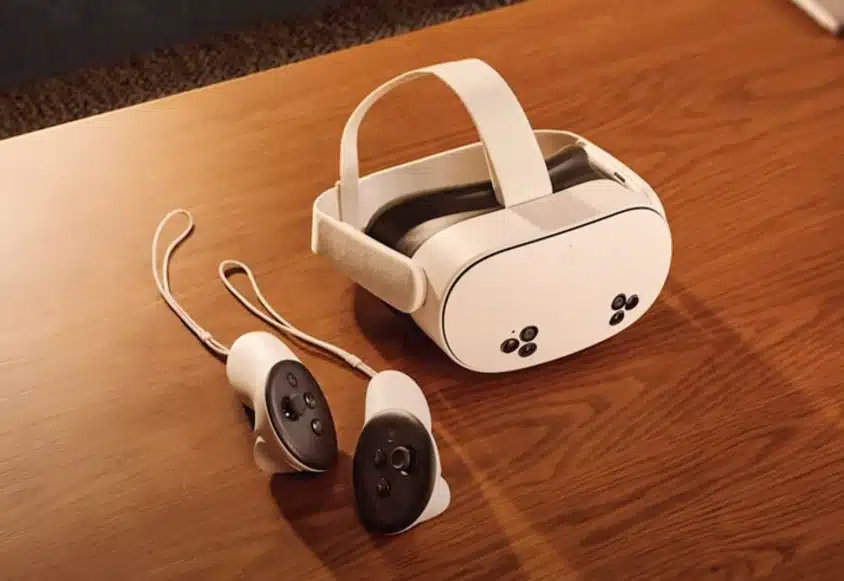
Valve Index Overview
The Valve Index is a premium VR headset that features dual LCD displays with a resolution of 1832 x 1920 per eye and a refresh rate of up to 144Hz, ensuring smooth and responsive visuals.
Its field of view spans 135° horizontally and 110° vertically, reducing the “tunnel vision” effect often found in other VR headsets. This broader viewing angle creates a more immersive experience, setting it apart from many competitors.
| Specification | Detail |
|---|---|
| Resolution | 1832 x 1920 per eye |
| Refresh Rate | Up to 144Hz |
| Field of View | 135° horizontal, 110° vertical |
| Tracking | External base stations |
| Weight | 809 grams |
| Price | $999 (Full Kit) |
Outside-In Tracking
The Index uses external base stations for precise room-scale tracking, delivering millimeter-level accuracy. While this setup requires more effort to configure compared to inside-out tracking systems like those in the Meta Quest 3, it offers unmatched precision, making it ideal for professional use.
This headset requires a powerful PC to unlock its full potential, which can limit its accessibility compared to standalone options. However, this tethered design allows for better graphical performance and more detailed VR experiences.
At $999 for the full kit, the Valve Index is a larger investment than standalone headsets. However, its high-quality build and advanced tracking system make it a strong choice for professionals and VR enthusiasts. For those looking to upgrade specific components, parts can also be purchased individually.
The Index shines in professional settings like architectural visualization and engineering simulations, where accuracy and high fidelity are critical. Its high refresh rate and wide field of view also make it a favorite for competitive VR gaming, though users will need dedicated space for the best experience.
While the Valve Index is a leader in precision and performance, other headsets, like the Pico 4 Ultra, provide a mix of portability and advanced features for users with different needs.
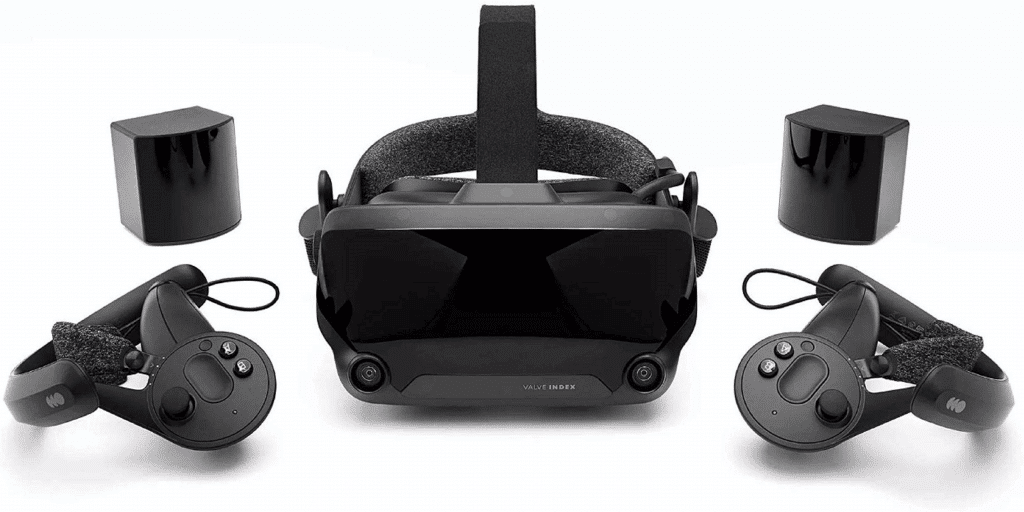
Pico 4 Ultra Overview
The Pico 4 Ultra delivers sharp visuals with its 1832 x 1920 resolution per eye and a smooth 120Hz refresh rate, making it ideal for gaming and professional tasks.
| Specification | Detail |
|---|---|
| Resolution | 1832 x 1920 per eye |
| Refresh Rate | 120Hz |
| Tracking | Inside-out |
| Mixed Reality | Advanced passthrough |
| Compatibility | Standalone & PC streaming |
| Display Type | High-resolution LCD |
This headset uses an inside-out tracking system, eliminating the need for external base stations. That means it’s easier to set up compared to systems like the Valve Index.
Mixed Reality
Its advanced passthrough feature lets you switch between virtual and real-world views with ease. This not only improves convenience during long sessions but also keeps you aware of your surroundings without removing the headset.
The Pico 4 Ultra can operate as a standalone device or connect to a PC for streaming, giving you access to a larger selection of VR content. This flexibility allows users to enjoy both Pico’s own library and PC-based VR experiences, making it more versatile than devices limited to either standalone or tethered setups.
Thanks to its high-resolution LCD and 120Hz refresh rate, visuals are crisp, and motion is smooth, whether you’re gaming or working on professional projects. Its mixed reality capabilities also open up opportunities for diverse applications, from entertainment to training simulations.
While the Pico 4 Ultra is designed to bridge consumer and professional VR needs, its long-term appeal will depend on expanding its content library and developer support.
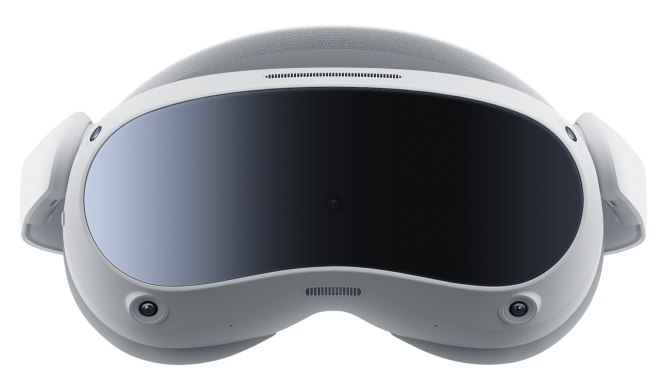
PlayStation VR2 Overview
The PlayStation VR2 offers a sharp 2000 x 2040 resolution per eye and a smooth 120Hz refresh rate, providing clear visuals that pull players deeper into the game.
| Specification | Detail |
|---|---|
| Resolution | 2000 x 2040 per eye |
| Refresh Rate | Up to 120Hz |
| Field of View | 110 degrees |
| Weight | 470 grams |
| Connection | Single USB-C |
| Display Type | OLED |
| Price | $549.99 (Standard) |
With advanced haptic feedback and adaptive triggers, the controllers deliver a more interactive and responsive experience compared to standard VR setups. Inside-out tracking ensures precise motion detection without the hassle of external cameras.
Connection to PS5
The single USB-C connection makes setup easier than the previous model, while built-in 3D audio and an integrated microphone add to the immersive experience.
At 470 grams, the headset does feel present during use, but features like adjustable IPD and a breathable design help minimize discomfort during long gaming sessions.
Priced at $549.99 for the standard bundle, the PS VR2 competes well in the premium VR space. However, it works exclusively with the PlayStation 5.
Vivis Display
The OLED display provides vivid visuals, perfect for fast-action games and intricate environments. Unlike the Pico 4 Ultra, which caters to both gaming and productivity, the PS VR2 focuses solely on gaming within the PlayStation ecosystem.
While its console-specific focus makes it a standout for PlayStation gamers, the lack of cross-platform compatibility might deter those looking for a more flexible VR option.
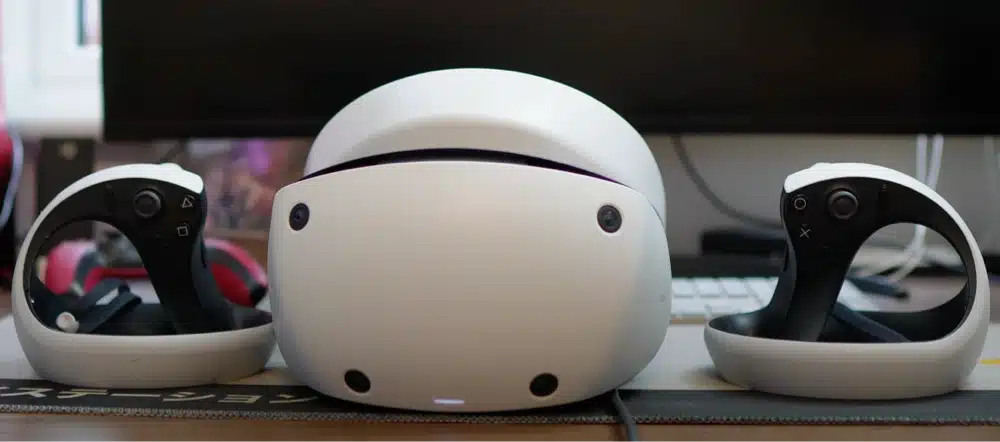
Apple Vision Pro Overview
The Apple Vision Pro stands as a pioneering mixed-reality headset, featuring dual micro-OLED displays that pack 23 million pixels into a premium viewing experience. Its unique EyeSight technology displays the user’s eyes on an outward-facing screen, bridging the gap between virtual and physical interactions.
The device runs on two specialized chips: the M2 for computing tasks and the R1 for processing sensor data. This dual-chip setup delivers a 12-millisecond photon-to-photon latency, creating fluid virtual experiences without the motion sickness common in other headsets.
| Specification | Detail |
|---|---|
| Resolution | 23 million total pixels |
| Refresh Rate | 90Hz, 96Hz, 100Hz |
| Storage Options | 256GB, 512GB, 1TB |
| Battery Life | 2-2.5 hours |
| Weight | 600-650 grams |
| Operating System | visionOS |
The Vision Pro’s sensor array includes six tracking cameras, four eye-tracking cameras, and a LiDAR Scanner, enabling precise hand and eye tracking. The Optic ID system uses iris scanning for secure authentication, while spatial audio with dynamic head tracking creates an immersive soundscape through bone conduction speakers.
Unlike traditional VR headsets, the Vision Pro emphasizes mixed reality with high-quality passthrough. Its stereoscopic 3D camera system captures the real world in vivid detail, though the external battery pack, connected via a custom Lightning port, might limit mobility during extended sessions.
Key Features and Performance
The Vision Pro shines in multitasking, displaying floating windows in your physical space. Its 16GB unified memory handles demanding applications smoothly, while Wi-Fi 6 and Bluetooth 5.3 support ensure stable connectivity. The digital crown, reminiscent of Apple Watch design, lets users control their level of immersion with a simple twist.
For users with prescriptions, custom optical inserts eliminate the awkward fit of glasses under the headset. The flexible cushion and adjustable headband (IPD range: 51-75 mm) provide comfort, though the 600-650 gram weight might be noticeable during longer sessions.
Limitations and Considerations
The 2-2.5 hour battery life might restrict extended use, though the ability to use the device while charging offers a workaround. At launch, the device is only available in the United States, and its premium positioning reflects in its feature set and price point.
The Vision Pro excels in productivity and entertainment scenarios, creating realistic “Personas” for virtual meetings. However, its weight and external battery pack design might impact extended wear comfort compared to lighter standalone headsets like the Meta Quest 3.
This mixed-reality powerhouse supports various accessibility features, including VoiceOver and Zoom, making it more inclusive than many competitors. Its temperature operating range (0° to 30°C) ensures reliable performance in most indoor environments, while active noise control helps maintain immersion in busy settings.
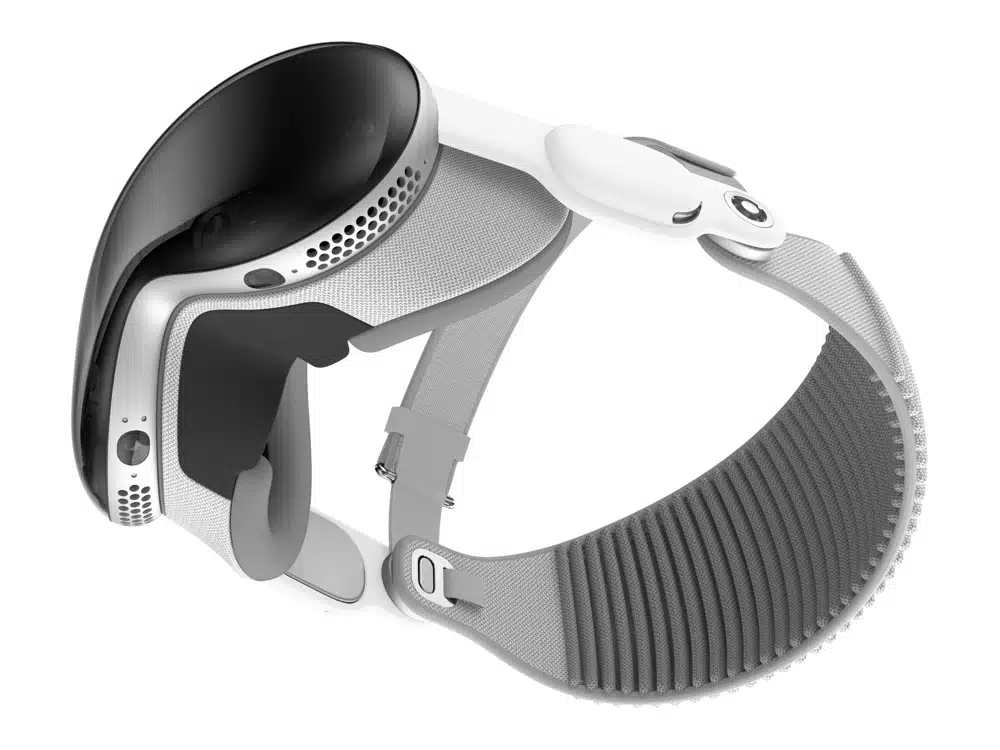
HTC Vive Pro 2 Overview
The HTC Vive Pro 2 delivers premium VR performance with its dual RGB LCD displays, offering a stunning 5K resolution (2448 × 2448 pixels per eye). Its fast-switch LCD technology with real RGB subpixels virtually eliminates the screen door effect that plagued earlier VR headsets, while supporting smooth refresh rates up to 120Hz.
The headset boasts an expansive 120-degree horizontal field of view, creating an immersive experience that surpasses many competitors. Its SteamVR Tracking V2.0 system ensures precise movement tracking, though it requires external base stations for operation.
| Specification | Detail |
|---|---|
| Resolution | 2448 × 2448 per eye |
| Refresh Rate | 90Hz, 120Hz |
| Field of View | 120° horizontal |
| Tracking | External base stations |
| IPD Range | 57-70mm |
| Connection | DisplayPort 1.2+ (1.4 for full res) |
The Vive Pro 2’s backward compatibility with existing HTC Vive accessories and SteamVR-compatible controllers adds value for users upgrading from previous generations. While the wired connection provides the best visual experience, the optional wireless adapter supports tetherless play at 90Hz with a reduced resolution.
Performance Requirements
This headset demands a high end gaming PC to achieve its full potential. Users need at least a NVIDIA RTX 20 Series or AMD Radeon 5000 Series GPU for maximum resolution mode, along with DisplayPort 1.4 and Display Stream Compression support.
| Specification | Minimum | Recommended |
|---|---|---|
| CPU | Intel i5-4590/AMD FX 8350 | Latest Gen |
| RAM | 8GB | 16GB+ |
| GPU | GTX 1060/RX 480 | RTX 20 Series+ |
| OS | Windows 10/11 | Windows 10/11 |
Advanced Features
The Vive Pro 2 supports an ecosystem of tracking accessories, including the Vive Tracker 3.0 for full-body tracking and an optional facial tracker. Its front-facing cameras enable a quick green-hued passthrough view with a triple-click of the menu button, helping users stay aware of their surroundings.
The adjustable headstrap and lens distance controls accommodate different head sizes and vision needs. However, the external base station setup requires more space and initial configuration compared to headsets with inside-out tracking.
This “prosumer” headset excels in both gaming and professional applications, though its premium features come with equally premium hardware requirements. While the Display Stream Compression technology helps manage bandwidth, users will need to invest in a capable PC setup to unlock the Vive Pro 2’s full potential.
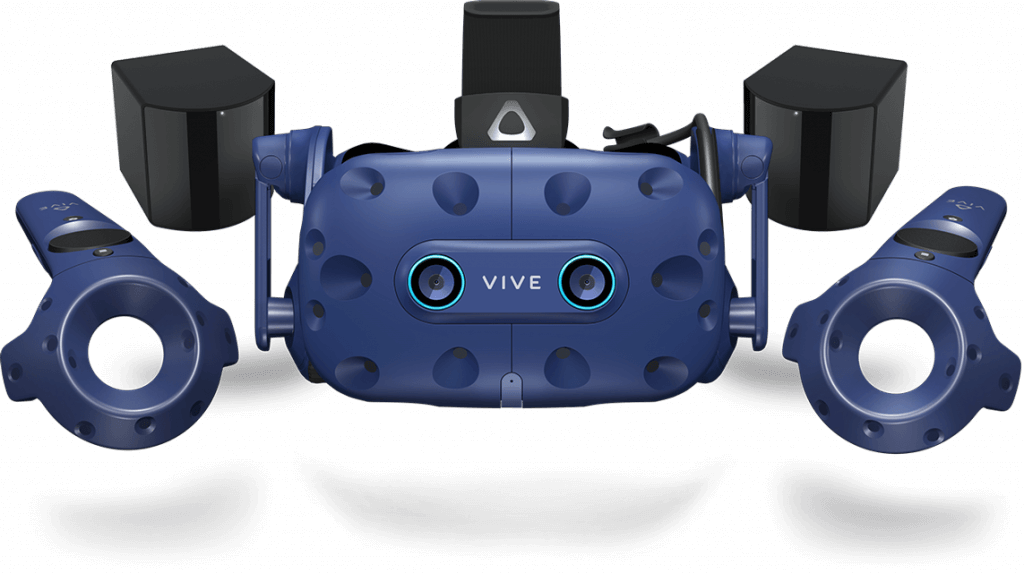
Meta Quest 2 Overview
The Meta Quest 2 revolutionized standalone VR with its all-in-one design powered by the Snapdragon XR2 chipset. Its fast-switch LCD display delivers sharp visuals at 1832 x 1920 pixels per eye, with support for refresh rates up to 120Hz in experimental mode.
At just 503 grams, this lightweight headset packs impressive hardware into a compact 7.5 x 4 x 5.2-inch frame. The inside-out tracking system eliminates the need for external sensors, offering six degrees of freedom movement with minimal setup.
| Specification | Detail |
|---|---|
| Resolution | 1832 x 1920 per eye |
| Refresh Rate | 72Hz, 90Hz, 120Hz (experimental) |
| Storage Options | 128GB, 256GB |
| Battery Life | 2-3 hours |
| Weight | 503 grams |
| RAM | 6GB |
The Quest 2’s versatility shines through its dual-mode operation. As a standalone device, it runs VR applications natively, while PC connectivity through Link Cable or Air Link unlocks access to premium PC VR experiences. The Wi-Fi 6 support ensures smooth wireless performance for both standalone and PC-connected play.
Hand tracking capabilities complement the redesigned Touch controllers, offering multiple input methods for different experiences. The Guardian system and Passthrough+ cameras help users stay aware of their surroundings without removing the headset.
Comfort and Accessibility
The three-position IPD adjustment (58mm, 63mm, or 68mm) accommodates different eye spacings, while the included glasses spacer makes the headset accessible to users with corrective lenses. The fabric head strap, though basic, provides adjustability for different head sizes.
Performance Features
The octa-core CPU and Adreno 650 GPU deliver capable standalone performance, though PC connection enables higher-fidelity experiences. Built-in stereo speakers provide spatial audio, with a 3.5mm jack available for private listening.
The Quest 2 supports multiple user accounts and offers extensive social features. Its fitness tracking capabilities have made it popular for VR workouts, while app multitasking and virtual desktop features extend its utility beyond gaming.
Limitations and Legacy
Though discontinued in 2024, the Quest 2 set important benchmarks for standalone VR. Its fixed IPD settings might not suit users outside the supported range, and the 2-3 hour battery life can limit extended sessions. However, its blend of accessibility, performance, and versatility established standards that newer headsets still strive to match.
The device’s extensive game library and feature set, coupled with PC VR compatibility, created a versatile platform that served both casual users and VR enthusiasts. While newer models offer improved specifications, the Quest 2’s influence on affordable, accessible VR remains significant.
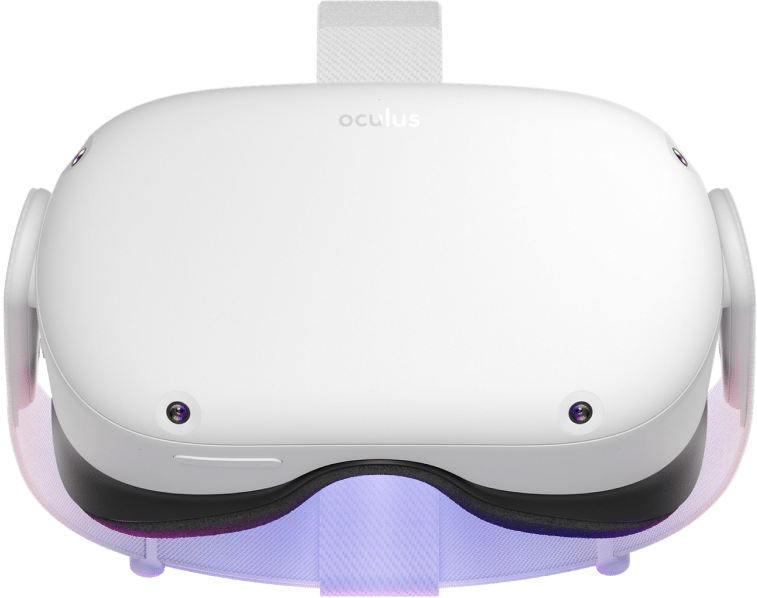
Advantages and Disadvantages of Each VR Headset
Let’s break down the pros and cons of each headset to help you decide which one fits your needs.
The Meta Quest 3 stands out with a 30% resolution boost and the Snapdragon XR2 Gen 2 chip, doubling its graphics power. However, its limited battery life and higher price might be drawbacks for some.
The HTC Vive Pro 2 is a top choice for PC VR enthusiasts, offering precise tracking and high refresh rates. But its need for external sensors and a tethered setup could make it less appealing for casual users.
The Pico 4 Ultra balances standalone functionality and mixed-reality features, making it ideal for productivity-focused users. Yet, its smaller content library and regional restrictions may be a concern.
The PlayStation VR2 excels with vibrant OLED visuals, advanced haptics, and an easy USB-C setup, but its PS5 exclusivity and lack of wireless options limit its versatility.
Choosing the right headset comes down to your main priorities – whether that’s gaming, productivity, or exploring mixed reality. Each option has its strengths and trade-offs to consider.
Conclusion
The virtual reality landscape in 2025 offers diverse options for every type of user, from casual gamers to enterprise professionals. Standalone headsets like the Meta Quest series and Pico 4 Ultra provide wireless freedom and convenience, while PC-tethered options such as the Valve Index and HTC Vive Pro 2 deliver maximum performance for enthusiasts.
The PlayStation VR2 serves console gamers with its specialized features, while the Apple Vision Pro introduces innovative mixed reality capabilities for those deep in the Apple ecosystem.
When choosing a headset, consider three key factors: your primary use case (gaming, professional work, or mixed reality), your preferred platform (PC, console, or standalone), and your budget (ranging from the more affordable Quest 2 to premium options like the Vision Pro).
With such a wide range of features and price points available, you can find a VR headset that perfectly matches your needs and preferences.
| Category | Recommended Headset | Key Features |
|---|---|---|
| Best Overall Standalone | Meta Quest 3 | High-resolution visuals and advanced mixed reality |
| Best Value | Meta Quest 3S | Affordable with essential features |
| Best for PS5 Gaming | PlayStation VR2 | Designed for seamless console gaming |
| Best for PC VR | Valve Index | Exceptional tracking and controller accuracy |
| Best for Professionals | Meta Quest Pro | Eye-tracking and features for enterprise users |
FAQs About VR Headsets
What is the best overall standalone VR headset?
The best overall VR headset is the Meta Quest 3. It is a great price and still contains a few premium features such as hand tracking, a good display, and the flexibility to run any VR game.
What is the best value VR headset?
The best value VR headset is the Meta Quest 3s. At only $300, it is a really cheap cost for VR gamers to get started with VR gaming.
What is the best VR Headset for PCVR Gaming?
The best VR headset for PCVR gaming is the Meta Quest 3. You can connect it to your gaming PC using Meta Quest Link, Air Link, Steam Link, or Virtual Desktop, so there are plenty of ways to play VR games from your computer.
What is the best VR headset for professionals?
The best VR headset for professionals are the Meta Quest Pro or the Apple Vision Pro. Both headsets contain advanced hand-tracking technology and additional features for professionals who want to work in virtual reality.

